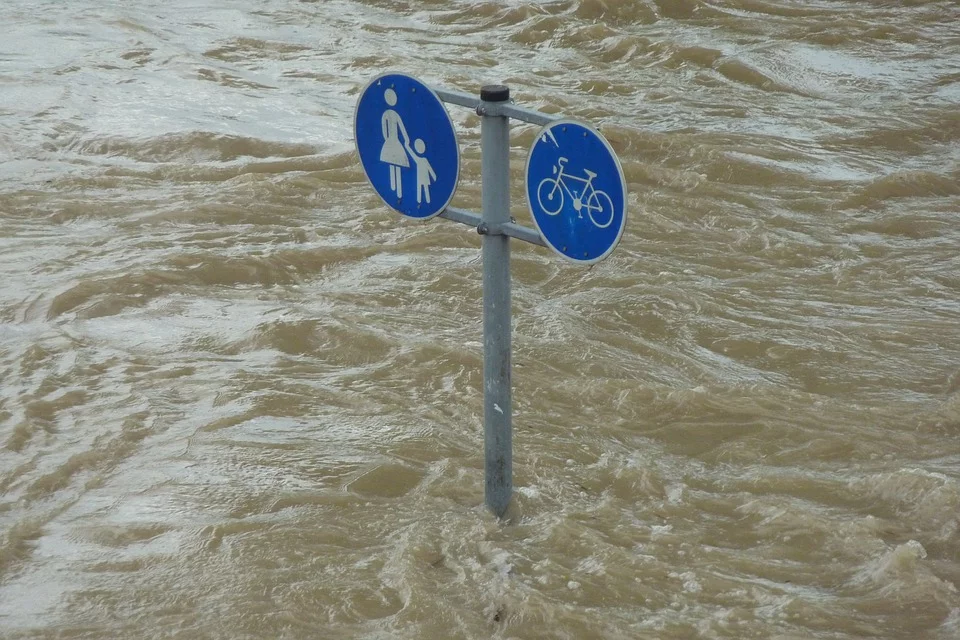East Ayrshire councillors call on ministers to review flooding policy

East Ayrshire councillors from all parties have joined forces in calling for a summit with Scottish ministers to discuss planning restrictions imposed by SEPA, which would significantly impact on future developments in the area.
Members raised concerns at a meeting of Cabinet earlier this week in response to the Scottish Government’s new National Planning Framework 4 (NPF4), which was adopted in February 2023. Flooding caused by climate change now features in planning policy, meaning that no new development, except essential infrastructure and water compatible development, will be allowed on designated flood plains.
Councillor Douglas Reid, leader of East Ayrshire Council expressed his concern, and his views were shared by other councillors present. He said: “We know this issue is a matter of national concern, but at a local level this policy would be catastrophic for some areas in East Ayrshire and in particular, our ability to regenerate parts of Kilmarnock town centre.
“I’ve already written to Mairi McAllan MSP, Cabinet Secretary for Transport, Net Zero and Just Transition to invite her to East Ayrshire to discuss these issues in more detail with her to ensure we are doing all that we can to continue to protect our communities from future flooding events and regenerate our towns and for her to see for herself some of the areas affected by this new policy.
“Given the strength of feeling expressed by fellow members in the chamber this week, I will now be writing to the First Minister to express these concerns, and I have received cross-party agreement to arrange a summit involving Scottish Government, SEPA and other agencies as required to explore this matter further.”
For East Ayrshire, this change in policy will significantly affect the sustainability of a number of areas which are already a flood risk area, including parts of Kilmarnock town centre. Under the terms of the policy, any development of land at risk of flooding will only be supported if it is a redevelopment of previously existing sites in built up areas where the Local Development Plan has identified a need for positive use and where resilience can be secured in accordance with SEPA advice.
The implications of this are far-reaching for parts of East Ayrshire in terms of regeneration, economic growth, investment potential and development opportunities and councillors unanimously agreed that SEPA should be challenged against this policy.
The report acknowledged the current flood risks which exist in parts of East Ayrshire, including a significant part of Kilmarnock town centre and an extensive stretch of land from Bellfield roundabout to Moorfield roundabout, some of which has been prone to flooding in the past. Other areas including other Irvine Valley towns and Dalmellington in the Doon Valley are also affected.
Despite previous efforts to mitigate, and construction of extensive flood defences, flood risk remains due to a combination of the natural topography and the legacy of the Victorian textile industries in the Irvine Valley.
However, with climate change and a likely increase in severe weather events, it is recognised that it is more important than ever to manage flooding to minimise risk and danger to life, property and landscape. East Ayrshire has successfully installed flood defences in many locations across East Ayrshire with great success, but the report also stressed the importance of ensuring that further problems are not created by building unsuitable developments in areas which are likely to flood. Planning decisions must take into account the risks posed by flooding to human and animal life, physical and mental health, property values and insurance, damage and loss of buildings, infrastructure and crops.
The main sources of funding for flood prevention schemes come from the Scottish Government and whilst East Ayrshire has benefited from some of this funding in the past, it is unlikely that East Ayrshire will receive funding for future flood prevention schemes in the short to medium term, due to high demand from other areas across Scotland and limited resources.
Councillor Reid continued: “The combination of lack of funding to keep going with the development of our flood prevention plans at the pace we choose, and the designation of this substantial area of Kilmarnock as a flood risk zone is a serious issue for us.
“It’s important to note that nationally the new NPF4 framework is causing major problems for some large scale developments in other authorities, so we’ll be joining with them and our local communities and businesses in lobbying the Scottish Government and SEPA to take a thorough look at what will happen to some of our brownfield sites which will now be rendered potentially undevelopable.
“We suspect that many local landowners will not yet be aware of the impact of the new national policy. The biggest issue for landowners is that existing developed sites earmarked for redevelopment where demolition takes place prior to planning consent being secured will be treated as undevelopable by SEPA.
“Whilst not much of the affected land is under Council ownership, we will be looking to involve private landowners in these conversations going forward, as any future regeneration and redevelopment depends on us having a close working relationship with the private sector.
“By working together, hopefully we can do all that we can to continue to protect our communities from future flooding events and at the same time continue to invest, develop and regenerate our towns for future generations.”















